This article was medically reviewed by Luba Lee, FNP-BC, MS. Luba Lee, FNP-BC is a Board-Certified Family Nurse Practitioner (FNP) and educator in Tennessee with over a decade of clinical experience. Luba has certifications in Pediatric Advanced Life Support (PALS), Emergency Medicine, Advanced Cardiac Life Support (ACLS), Team Building, and Critical Care Nursing. She received her Master of Science in Nursing (MSN) from the University of Tennessee in 2006.
There are 13 references cited in this article, which can be found at the bottom of the page.
wikiHow marks an article as reader-approved once it receives enough positive feedback. In this case, 88% of readers who voted found the article helpful, earning it our reader-approved status.
This article has been viewed 774,336 times.
All types of bugs bite — mosquitoes, black flies, horse flies, fleas, mites, chiggers, bedbugs, ticks, etc. — and not a single one of them is any fun. While the bite or sting itself may not be too bad, the swelling and itching afterwards can be extremely annoying. Thankfully, there are a lot of things you can do, with and without medical supplies, to help relieve the pain and itching of a bug bite and eventually get rid of the bite altogether.
Steps
Treating a Bug Bite
-
1Clean the bite area. Before doing anything else, thoroughly clean the area where the bite occurred. Use soap and warm water to do this. If there’s swelling in the area of the bug bite, you can put a cold compress or ice pack on the bite to help reduce the swelling. The cold will also temporarily help relieve the pain and itching.[1]
-
Apply a cold compress or ice pack for a maximum of 10 minutes at a time.After the 10 minutes of application, leave it off for another 10 minutes. Do this rotation for up to an hour.
-
-
2Do not scratch the bite. The bite area will most likely be itchy and you will be tempted to scratch — don’t.Do your absolute best to resist the urge to scratch.Unfortunately, scratching a bug bite can make things worse by causing an infection.[2]Advertisement
-
3Apply anti-itch lotions and creams. If the bite continues to be itchy, you can applycalamine lotion, a topical antihistamine, or a corticosteroid creamto help relieve it. All of these lotions and creams are available as over-the-counter medications at your local pharmacy. If you aren’t sure which one might work best for you, talk to your pharmacist.[3]
-
4Take oral medications. You can take acetaminophen (e.g. Tylenol), ibuprofen (i.e. Advil), or an antihistamine (e.g. Claritin) orally if you need to relieve the pain or itching.[4]
- If you take a daily allergy medication, be careful if you want to take an additional antihistamine. Check with your doctor or pharmacist if you can increase the dose, or combine it safely with another type of medication.
-
5Use a baking soda paste. Applying a homemade baking soda paste to your bite can help to draw out toxins and relieve itching.[5] It has been said that it can also speed up the healing process.
Making a Baking Soda and Salt Paste
Mix 2 parts baking soda with 1 part salt.
Then, mix with just enough water to stir into a thick paste.[6]
Apply the paste with a cotton swab directly to the insect bite.
Wash the paste off after 15 to 20 minutes. -
6Consider a meat tenderizer. Yes, you read that right! Mix a non-seasoned meat tenderizer with warm water until it forms a paste. Apply that paste directly to the insect bite to help ease the itching. Wash the paste off after 15 to 20 minutes.[7]
-
7Try a wet tea bag. Steep a tea bag for a short time in warm water, then apply the wet tea bag to the insect bite to help relieve the itching. If you used the tea bag for an actual cup of tea first, make sure it’s cooled down enough before putting it on your skin. Leave the tea bag on your skin for 15 to 20 minutes.[8]
-
8Chop up some fruits or vegetables. There are several fruits and vegetables that contain enzymes that may help reduce swelling and itching. Try one of the following options:[9]
- Papaya — Lay a slice on the bug bite for an hour.
- Onion — Rub a slice of onion on the bug bite.
- Garlic — Crush a clove of garlic and apply the garlic to the bug bite.
-
9Soak the bite in apple cider vinegar. Immediately after the bite has happened, soak the area in apple cider vinegar (if possible) for a few minutes. When the bite is still bothering you, pour apple cider vinegar on a cotton ball, and tape the cotton ball on top of the bug bite with a bandaid.[10]
-
10Crush an aspirin. Use a spoon or a mortar and pestle to crush a pill of aspirin. Add some water to turn the powder into a paste, then apply the paste to the bite. You can leave the paste on your skin (similar to what you would do with calamine lotion) and wash it off when you have your next shower or bath.[11]
-
11Drop on tea tree oil. Put one drop of tea tree oil onto the bite once day. This may not help with the itching, but it may help reduce and eliminate the swelling.[12]
- As an alternative, use one to two drops of lavender or peppermint oil to help stop the itching.
Dealing With a Tick Bite
-
1Look for ticks. Ticks live outdoors and are very small. Unlike other bugs, they don’t just bite and leave. They embed themselves into the skin and continue to feed off their human host. They like small, hairy areas like: the scalp, behind the ear, in the armpit or groin, between fingers and toes. When checking for ticks, start in these areas, but check your whole body just to be sure.[13]
-
2Remove the tick. The tick must be removed from its human host. The person who has been bitten will likely need assistance from another person, especially if the tick is someplace hard to reach. Do not touch the tick with bare hands.[14]
How to Remove a Tick
If you are alone, nervous, unsure, or do not have the proper tools, go to a health care practitioner to have the tick removed. Unless a serious allergic reaction is involved, you do not need to go to the ER.
Grab the tick, by its mouth or head, with a pair of tweezers. Try to grab the tick as close to the skin as you possibly can.Do not squeeze the tick with the tweezers.
Pull up on the tick slowly and gently in a straight direction — do not twist.
Remove any remaining parts from the skin if the tick breaks apart.
Do not discard the tick, even if it breaks apart.
Do not use things like: petroleum jelly, solvents, knives, or matches. -
3Save the tick. Yes, you should keep the tick temporarily. Because ticks can carry diseases like Lyme disease, you may wish to have the tick tested if you show signs of Lyme disease, or even if you don't. If it tests positive for anything, you may need additional medical treatment.[15]
- Place the tick in a plastic baggie or small container (e.g. empty pill bottle, etc.).
- If the tick is still alive, store it in the fridge for up to 10 days.[16]
- If the tick is dead, store it in the freezer for up to 10 days.
- If you aren’t able to submit the tick within 10 days, throw it out. Even frozen or refrigerated ticks won’t be viable for testing after 10 days.
-
4Go to the doctor. If the tick is embedded deep in the skin, or someone was only able to remove a portion of the tick, you’ll need to go to the doctor and have it removed. You should also go to your doctor if you have any of the symptoms of Lyme disease.[17]
Signs of Lyme Disease
Initial sign: a bulls-eye pattern rash.
Common symptoms: fatigue, fever or chills, headaches, spasms or weakness, numbness or tingling, swollen lymph nodes.[18]
More severe symptoms: impaired cognitive function, nervous system disorders, arthritic symptoms, and/or an abnormal heartbeat. -
5Wash the area of the tick bite. Use soap and water to wash the area of the tick bite. Apply some type of antiseptic to the area to disinfect the bite. You can userubbing alcohol, hand sanitizer, etc.Make sure to wash your hands after you’ve completed this step.[19]
-
6Submit the tick for testing. Testing is usually done by your local public health authority. Check with your health department to see if testing is available in your area. The public health lab will start by checking what type of tick it is, as only some carry diseases. If the tick is of concern, they may then perform tests, or send it to a national lab for further tests.[20]
- If you live in Canada in a province that does not have a provincial lab that tests ticks, you can submit the tick directly to the National Microbiology Laboratory (NML) for testing. Follow the instructions on the Government of Canada website to submit a tick to the NML.
- If you live in the United States, each state’s public health department will have a procedure on how to submit a tick for testing. Check your state’s public health website for detailed instructions.[21]
-
If you show signs of infectionbut are still waiting on the results of the tick test,do not delay treatment,and remember that false negatives are possible, or you may even have been bitten by another tick and not be aware.
Preventing Bug Bites
-
1Do not wear scented items. Some bugs are attracted to certain scents, or just the fact that something smells different from what they’re used to.Avoid wearing any perfume or scented lotionsand creams when outdoors.
-
2Use insect repellent. Insect repellent comes in both spray and lotion versions. Use insect repellent before going outdoors to help prevent bugs from landing on you in the first place. The spray is easier to cover your whole body, as it can also be sprayed directly onto your clothing. However, the lotion can be applied directly to your skin and can be targeted at exposed areas.
- Read the instructions for the repellent lotion as to whether you can use it on your face. Never apply it near your eyes.
- Insect repellent that contains DEET is the most effective.
- Wait at least 30 minutes before applying the repellent if you’ve just applied sunscreen.
-
3Wear protective clothing. In addition to wearing long-sleeved shirts and long pants, you can also wear clothing specifically designed to keep the bugs out. This special clothing includes a hat with thin netting that comes down to cover your face, neck, and shoulders. If you’re going to an area with a lot of bugs, this might be a better option than repellent.
- You can also tuck your pants into your socks to keep the bugs from biting your ankles.
-
4Remove standing water. Water that’s built up in puddles and ditches, or any water that isn’t moving with a current, can become breeding grounds for mosquito eggs. If there’s standing water on your property, remove it to help eliminate the possibility of mosquitoes. If you’re outdoors, avoid areas with standing water if you can.
-
5Light a citronella candle. Candles made withcitronella, linalool, and geraniolhave all been shown to keep bugs, mainly mosquitoes, away. In fact, there are studies that show citronella reduces the number of female mosquitoes in the area by 35%, linalool reduces the number by 65%, and geraniol reduces the number by 82%!
- They even make citronella-scented badges that you can wear on your clothing.
-
6Create an essential oil repellent. There are some essential oils that are known to help repel bugs, and when combined with water can be applied to your skin to help keep the bugs away. You can also try an essential oil diffuser instead of a candle.
- The following essential oils work to repel bugs: eucalyptus, clove, citronella, neem oil or cream, and camphor and menthol gels.
- If you’re applying a solution directly to your skin, be careful to keep it away from your eyes.
Identifying What To Do
-
1Recognize the symptoms of a bug bite. While this may seem quite obvious, it is important to be sure you’re treating a bug bite and not something else, like poison ivy. Plus, some symptoms may be similar to other medical conditions, especially if you are allergic to the bug that bit you.[22]
Symptoms to Watch For
You can experience one, some, all, or even none of these symptoms, depending on how you personally react to the specific bug and bite.[23]
Symptoms on or near the bite wound: pain, swelling, redness, itching, warmth, hives, and/or small amounts of bleeding.
Serious symptoms that could indicate a life-threatening allergy to the bug bite: coughing, tickling in the throat, tightness in the throat or chest, breathing problems, wheezing, nausea or vomiting, dizziness or fainting, sweating, anxiety, and/or itching and a rash somewhere else on your body other than the bite area.[24] -
2Know when it is an emergency. If someone wasstung inside the mouth, nose or throat, or is experiencing a possible severe allergic reaction, call 911 or 999 or take the person to the ERright away. People who are suffering in this way may need medical intervention to help them breathe, and will likely need some sort of medication in order to alleviate the symptoms (e.g. epinephrine, corticosteroids, etc.).[25]
- If the person who was stung has a known allergy to certain bug bites, she may carry an EpiPen (a portable shot which delivers epinephrine) with her. If she has one, follow the instructions on the EpiPen to administer the medication to the person immediately.
- The person must still see a doctor immediately, even if you have administered a shot of epinephrine.
-
3Know when to follow up with a doctor. If the person who was stung is not having a serious allergic reaction (or wasn’t stung inside his airway) he may be okay temporarily. If he starts to experience any of the following symptoms, he may need to go to the doctor for further treatment.[26]
- Secondary infections can be caused by itching and causing a break in the skin through which bacteria can enter. The skin is the first layer of defense against infection.
- Persistent pain or itching, fever, signs of infection at the bug bite location.
- As an example, if this person has an infection, he will most likely need antibiotics in order to fight that infection.
References
- ↑ https://www.aad.org/public/everyday-care/injured-skin/bites/prevent-treat-bug-bites
- ↑ http://www.nhs.uk/Conditions/Bites-insect/Pages/Treatment.aspx
- ↑ https://www.nhs.uk/conditions/insect-bites-and-stings/treatment/
- ↑ http://www.hopkinsmedicine.org/healthlibrary/conditions/adult/pediatrics/bites_and_stings_insects_85,p01032/
- ↑ https://www.seattlechildrens.org/conditions/a-z/insect-bite/
- ↑ https://www.youtube.com/watch?v=wXM1iFXS1eQ&feature=youtu.be&t=41s
- ↑ http://www.hopkinsmedicine.org/healthlibrary/conditions/adult/pediatrics/bites_and_stings_insects_85,p01032/
- ↑ http://www.hopkinsmedicine.org/healthlibrary/conditions/adult/pediatrics/bites_and_stings_insects_85,p01032/
- ↑ http://www.besthealthmag.ca/best-you/home-remedies/natural-home-remedies-insect-and-spider-bites
- ↑ http://www.besthealthmag.ca/best-you/home-remedies/natural-home-remedies-insect-and-spider-bites
- ↑ http://www.besthealthmag.ca/best-you/home-remedies/natural-home-remedies-insect-and-spider-bites
- ↑ http://www.besthealthmag.ca/best-you/home-remedies/natural-home-remedies-insect-and-spider-bites
- ↑ https://www.nhs.uk/conditions/insect-bites-and-stings/treatment
- ↑ https://my.clevelandclinic.org/health/articles/7234-tick-bites#management-and-treatment
- ↑ http://www.hopkinsmedicine.org/healthlibrary/conditions/adult/pediatrics/bites_and_stings_insects_85,p01032/
- ↑ http://healthycanadians.gc.ca/diseases-conditions-maladies-affections/disease-maladie/lyme/ticks-removal-enlever-tiques-eng.php
- ↑ http://healthycanadians.gc.ca/diseases-conditions-maladies-affections/disease-maladie/lyme/ticks-removal-enlever-tiques-eng.php
- ↑ http://healthycanadians.gc.ca/diseases-conditions-maladies-affections/disease-maladie/lyme/symptoms-symptomes-eng.php
- ↑ http://healthycanadians.gc.ca/diseases-conditions-maladies-affections/disease-maladie/lyme/ticks-removal-enlever-tiques-eng.php
- ↑ http://healthycanadians.gc.ca/diseases-conditions-maladies-affections/disease-maladie/lyme/ticks-removal-enlever-tiques-eng.php
- ↑ http://www.doh.wa.gov/Portals/1/Documents/Pubs/333-179.pdf
- ↑ http://www.hopkinsmedicine.org/healthlibrary/conditions/adult/pediatrics/bites_and_stings_insects_85,p01032/
- ↑ http://www.hopkinsmedicine.org/healthlibrary/conditions/adult/pediatrics/bites_and_stings_insects_85,p01032/
- ↑ http://www.hopkinsmedicine.org/healthlibrary/conditions/adult/pediatrics/bites_and_stings_insects_85,p01032/
- ↑ http://www.hopkinsmedicine.org/healthlibrary/conditions/adult/pediatrics/bites_and_stings_insects_85,p01032/
- ↑ http://www.hopkinsmedicine.org/healthlibrary/conditions/adult/pediatrics/bites_and_stings_insects_85,p01032/
- ↑ http://www.medicinenet.com/bug_bite_treatment-page2/views.htm
About This Article
If you need to get rid of a bug bite, clean the area thoroughly with soap and water. If the bite is itchy, apply calamine lotion, a topical antihistamine, or a corticosteroid cream to relieve the itching. For a natural remedy, apply a paste made of 1 part warm water and 3 parts baking soda to the area, then wash it off after 15-20 minutes. You could also place a wet tea bag over the bug bite to help relieve the pain and itching. For advice from our medical reviewer on how to treat a tick bite, keep reading!
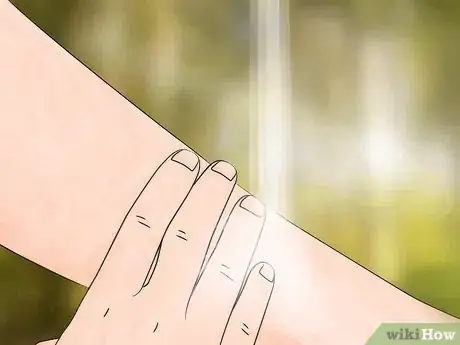
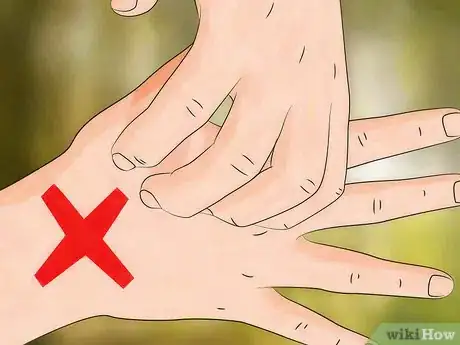
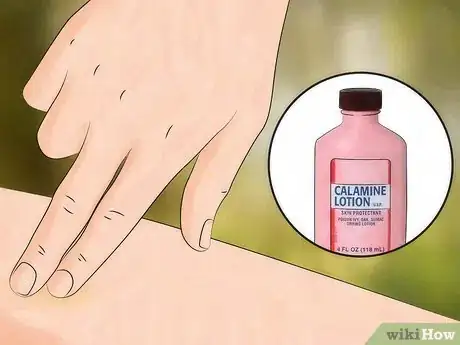
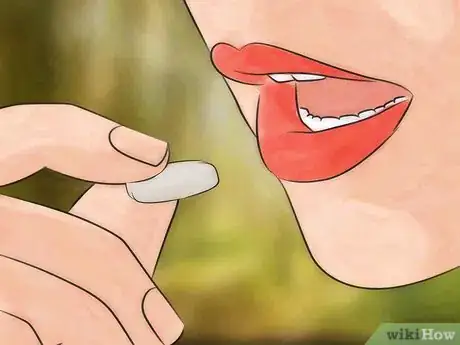
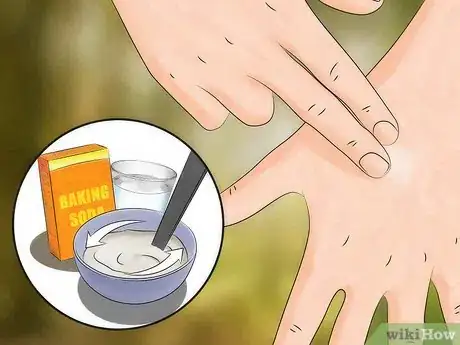
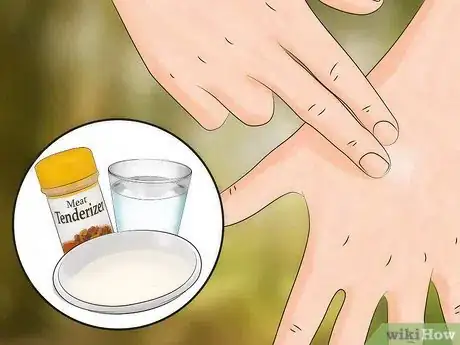
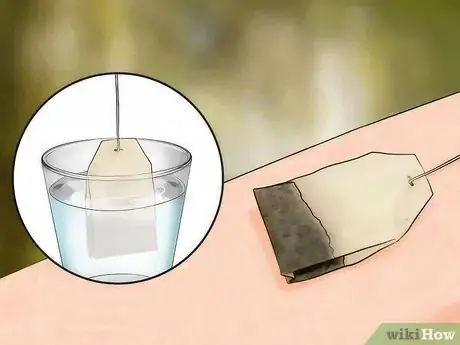
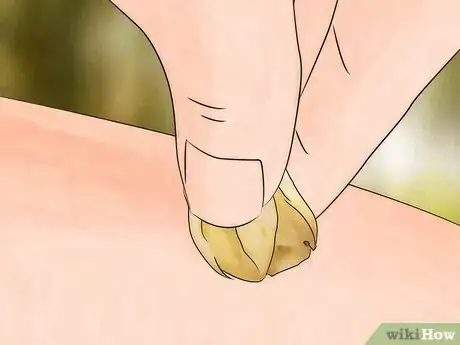
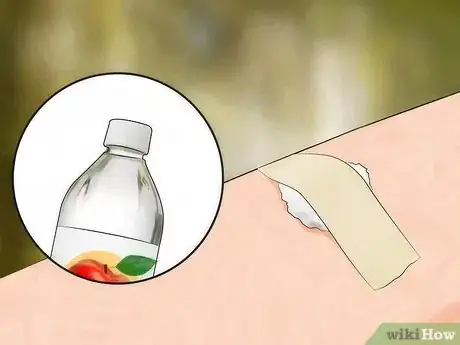
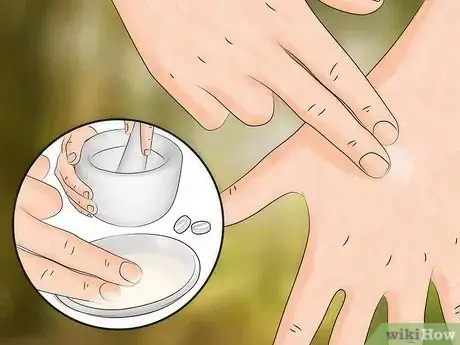
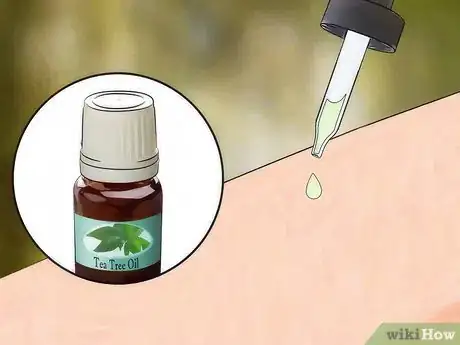
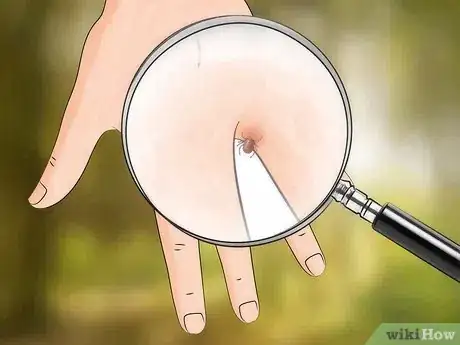
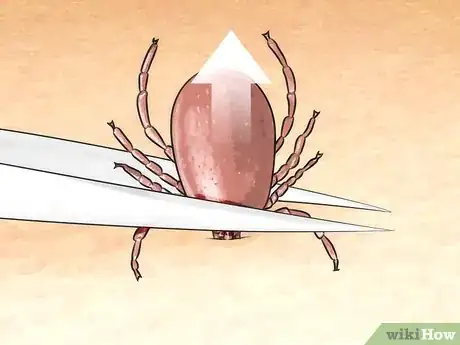
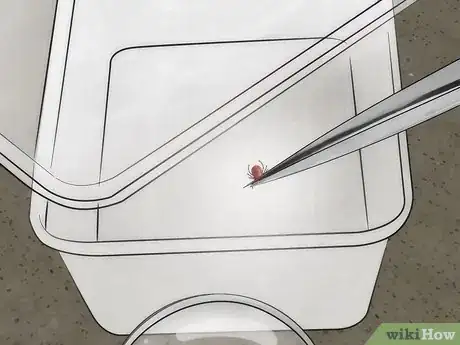
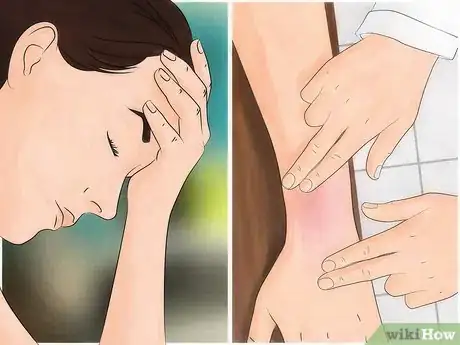
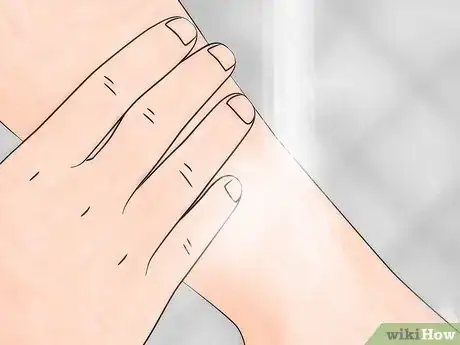
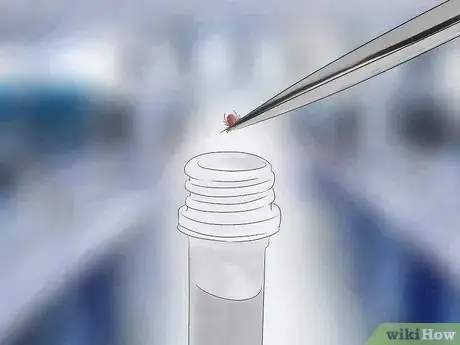
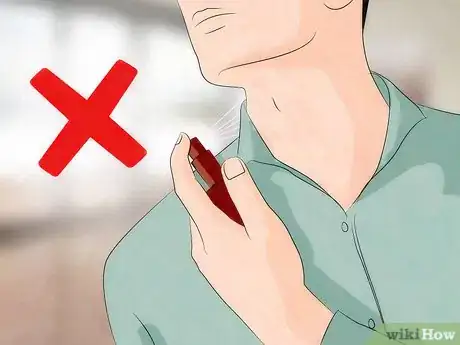
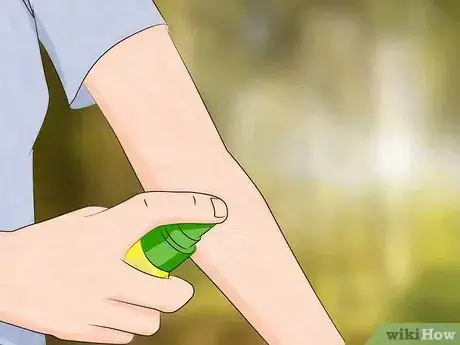
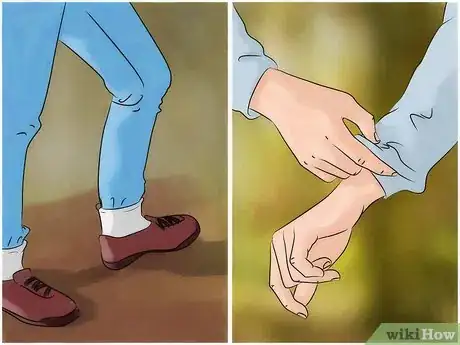
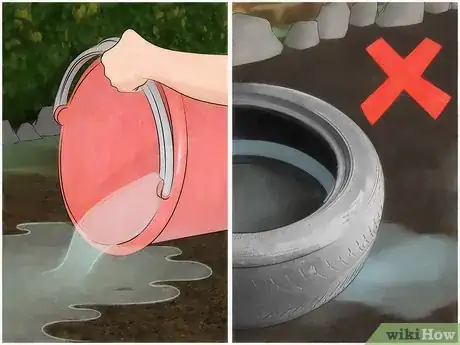
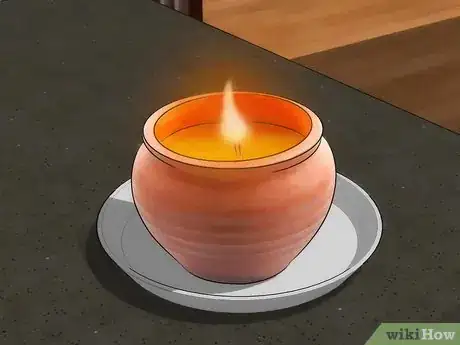

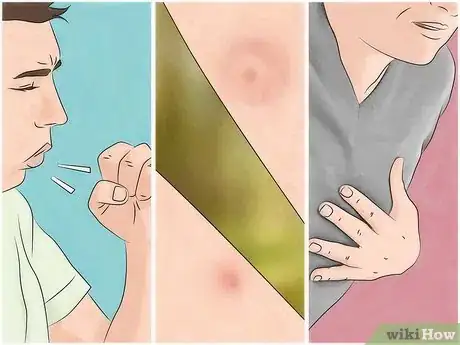
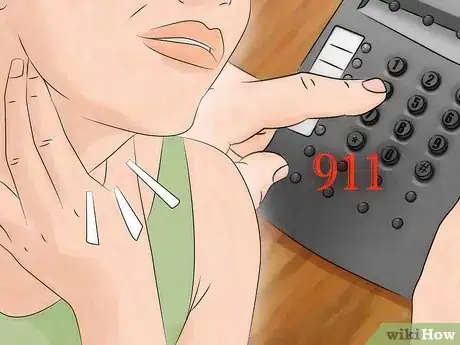
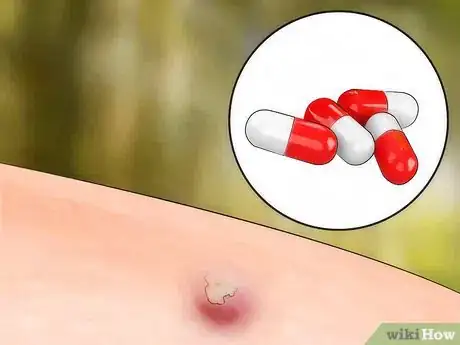








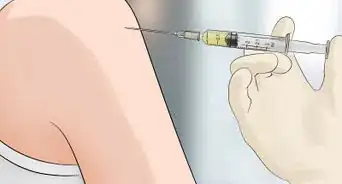

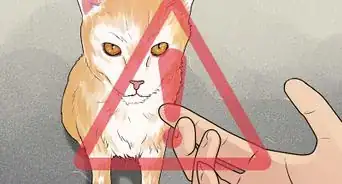












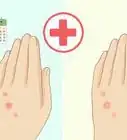
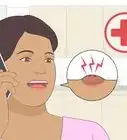
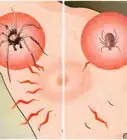
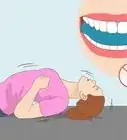



































Medical Disclaimer
The content of this article is not intended to be a substitute for professional medical advice, examination, diagnosis, or treatment. You should always contact your doctor or other qualified healthcare professional before starting, changing, or stopping any kind of health treatment.
Read More...